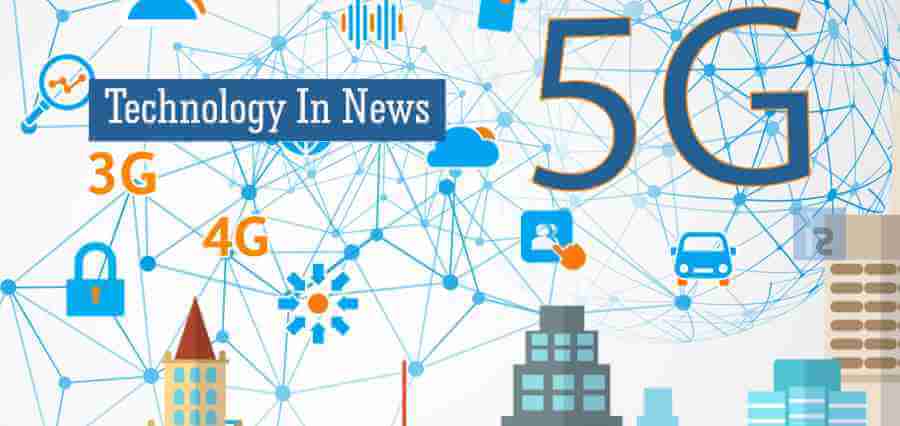The first generation of mobile network (commonly referred to as 1G) came into public use in around 1982. At that time it was fully analog system until the launch of 2G (second generation networks) in 1991, which was digital a system. Ten years later, 3G technology was launched, that offered even faster data rate than 2G. Around 10 years after that, the current LTE network, 4G made strong entry into the market. By looking at the history, one thing becomes very clear, latency and data speed became the deciding factor for the consumers to switch from one technology to the upgraded one. 5G promises even much higher data speed with miniscule latency. This is prompting organizations to invest more in 5G technologies as it is seen as the next revolution in making.
The Thrill behind 5G
The evolution from 2G to 3G had changed the entire dynamics of our society and the business industry. Due to faster data speed and low latency rates people are transitioning from 3G to 4G services and it is among one of the prime reasons people access and use the internet on their mobile device. Various studies show that monthly data consumption by 4G customers is almost double than that of non-4G consumers. Increasing video streaming due to high speed of 4G networks is often cited as a reason for this. Transition to 5G will bring even greater revolution in the telecom industry as it promises immense benefits to the consumers.
5G promises incredible download speeds of 20 GBs/second against 1 GB/second on a 4G network on your smartphone. It is just like having a fiber optic connection in your pocket anywhere you go. The power of 5G one can gauge from the fact that, 5G will enable its customers to download a 3-hour HD movie in a second on his smartphone as compared to at least 10 minutes that is required for a 4G user. This can be achieved since a 5G network will have the potential to deliver data with less than a millisecond (ms) of delay as compared to about 70 ms on a 4G network. Low latency and light-fastening data speed are the actual strength of 5G network that is set to change the landscape of networking forever.
Mobile Edge Computing will see Evolution
The roll-out of 5G networks will give upswing to ‘Mobile Edge Computing’ (MEC) that promises smooth execution of many advanced applications. Intel assumes high bandwidth rates will be available to mobile a computing device that is needed to support both augmented and virtual reality applications that are deployed at the edge of a service provider’s network.
The cellular base stations will see a dramatic transition over a couple of years from now. As part of MEC initiatives, telecom operators are planning to enable applications to run at the edge of the network or at the cellular base station. This will assist in reducing network latency which occurs when an end user assesses an application. Since MEC enable the application to run closer to the end user, there will be drastic improvement as far as network latency is concerned. Already many companies have made considerable growth into 5G application developments.
Services that will be benefitted from 5G
Applications that will witness a huge benefit from 5G enabled MEC platforms span from augmented reality, real-time video to location-based services and Internet of Things (IoT). Autonomous cars will serve as a good example of a genuine 5G use case as they will rely on very low latency response times. Enterprise cloud based services will also benefit from 5G as they run large scale data that requires quick data rates.
Market Predictions for 5G
The roll out of 5G is not far away. It is predicted that by 2020, fully standardized 5G networks will start to hit the market and will deliver unprecedented level of connectivity. It will be an interesting technology for variety of reasons; 5G will follow a ‘network-of-network’ approach empowering the convergence of fixed and wireless networks to bring together progression of mobile broadband services, ultra-reliable critical communications services and the fruition of large scale IoT projects. According to SNS research report, 5G networks will account for almost 5% of all spending on wireless network infrastructure by 2020. The market is expected to swing back to positive growth at an estimated CAGR of 2% from 2017-2020 driven by investment in HetNet infrastructure and 5G rollouts in early 2020. The report also predicted that major investments in 5G will further increase this growth to more than 40% by the end of 2025. In fact, research firm Ovum predicts that 5G will fetch more than 24 million subscriptions for wireless services by 2021.
Overall, 5G will bring a plethora of changes and enhancements for mobile networking technology, mobile broadband, critical communications, V2X (Vehicle-to-Infrastructure) speed, latency and bandwidth. The benefits include: 100x connected devices per unit area, 99.999% availability, blanket coverage and a 90% reduction in network energy usage. 5G will also enhance the level of performance big IoT projects desire for achieving higher productivity.


